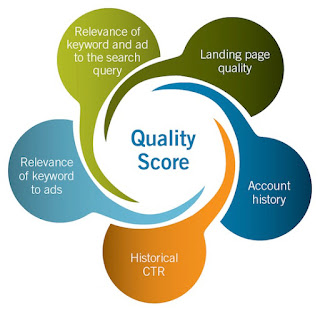Google Webmaster Tools vs Google Analytics.
Difference between Analytics and Google’s Webmaster Tools:
There are some pretty significant differences between these two. So what exactly Webmaster Tools is.
Google Webmaster Tools is another free tool prepare to improve and optimize websites by giving a clear picture of exactly what is going on within the site. While this may seem similar to what Analytics does, there are patent differences between the two. Only using one piece leaves a great deal of important information on the table that could be used to drag more traffic and more sales from a website.
Crawling- Gives information on which pages search engines are not able to crawl. If a search engine is unable to crawl a website, site rankings are shot. It also gives the ability to tell Google not to index certain private pages that should not be available to the public.
Search Results- Google gives a vision into how many searches returned pages from your site, the total number of pages shown in search results, number of times a search result ended in a click-through, percentage of time a web search resulted in a click-through and the average position a website is display on searches. This is all essential information for anyone doing any sort of SEO or Adwords campaign as it gives vision into if the campaign is working or if changes need to be made.
Links- Links are foremost for a successful website. Webmaster tools can show if there are any broken links pointing back to a website. These links can either be fixed or removed. It also show’s how many internal links are there in each page . Internal links are a great way to get some love from Google, knowing which page Google feels is the most important can be highly valuable.
Site Configuration- Submitting a sitemap to Google is a good way to assure all of the pages to a website are indexed by Google. This may not seem too important, however if a page is not indexed, there’s no way anyone can find it in a search. This means limited traffic to a website. There are also appearance included such as the ability to choose which sitelinks show up in a Google search and how to notify Google if the URL to a website is changing.
Diagnostic problems- If the website turn out infected with malware, Webmaster Tools will send notification, giving a heads up to get that fixed up and keep a site from being blocked by Google. In addition, it can also point out any errors within the HTML on the website and give vision into the load times of a website.
Google Analytics is represent to give a picture of who is coming to a website, how many hits a site gets, how people are finding the site and what content is in the mainstream.Webmaster tools differ in that they are designed to prepare a picture on how a website is seen by a search engine. Specifically, Webmaster Tools provides the following information:
Hit
With Google Analytics, a hit is ANY inquiry sent to the GA data collection system. This carry pageviews, events, custom variables, measurement protocol uploads, etc.
You can backup your Google Analytics data by safekeeping a copy of the hits sent to Google. There are many prime reasons to do this, as explained here: backup your Google Analytics data
Pageview
A pageview is noted every-time a page is viewed. Or, more technically, a pageview is noted every-time the Google Analytics pageview tracking method is accomplished. When a visitor hits the back button, a pageview is recorded. When a visitor tap refresh, a pageview is recorded. Every time a page is opened in the browser, regardless of whether it has been cached, a pageview is recorded.
Visit
A visit abide of a series of pageviews that a single visitor makes during a period of activity. A visit ends after the visitor either closes the browser, clears cookies, or is asleep for 30 minutes. (The timeout length is customizable in the tracking code settings)
Visitors
Visitors are defined by a individual ID - this ID is usually stored in a visitor's cookies. Whenever the tracking code is executed(carried out),it looks for cookies on the browser set by the current domain. If they can't be found, new cookies including a new ID are set. Google Analytics hit visits over visitors because of the inherent inaccuracies of trying to track individual users. For example, a visitor who deletes their cookies, uses multiple browsers or shares their computer will show up wrongly.
Bounce
A visit by(including) one pageview. It doesn't matter how long the visitor stay on the page or how they left. Technically, it's a visit with only one communication.
Time on Page
Time on page is measured by subtracting the time a visitor tap a page from the time they tap the next page. (e.g. If they hit Page 1 at 11:00 and hit Page 2 at 11:03, time on Page 1 is three minutes.) This means that the time on page for the last page in a visit is always zero because Google Analytics doesn't track pages being folded.
Time on Site
This is the total of the time on page for all page views in a visit. Or, more exactly, it is the difference between the time they viewed the first page and last page in a visit. Note that viewing pages in different tabs doesn't act on this. Google Analytics simply sees a string of pages being viewed in dated order, without any reference to multiple tabs or windows.
New Visitor
A visitor who did not have Google Analytics cookies when they tap the first page in this visit. If a visitor deletes their cookies and comes back to the site, the visitor will be counted as a new visitor.
Returning Visitor
A visitor with existing Google Analytics cookies from a previous visit.
Dollar Index
A measurement of how influential a page is to conversion. The higher the number, the more frequently it was viewed prior to a purchase or conversion. It's figured by taking the goal conversion value or transaction value of a visit and applying it evenly to all the pages prior to that conversion. Seen in aggregate, it just attempts to correlate pages to conversions.
Pages/Visit
Pageviews divided by visits. This metric shows the average number of pages viewed per visit.
Direct Traffic
Ideally, this is the traffic that came to a site via bookmarks or by directly (right) typing in the URL. In reality, it is the traffic for which the code is unable resolve a source. Depending on the site and the browser, some links may not show a referrer and instead would be classify as direct. Using campaign variables will get around this misstatement every time.
Search Engine Traffic
Google Analytics automatically identify traffic as coming from a search engine if the referring URL is from its list of known search engines and there is a search term analyze in that URL. Both organic and paid search engine traffic is place into this group.
Event Tracking
A feature that allows you to track visitor activities clearly from pageviews. This is commonly used to track intercommunication with AJAX or Flash content.
Google Analytics API
The API abstract data from Google Analytics accounts. It allows customers to programmatically abstract Google Analytics data and incorporate it with 3rd party applications and/or databases.
These are some features Google Webmaster Tool offers. Overall, it’s a free tool incredibly valuable. Choosing not to take full advantage of this can prevent you from seeing key information
on a website.. Share your experience with Google Webmaster Tools with us? Put your comments below!




